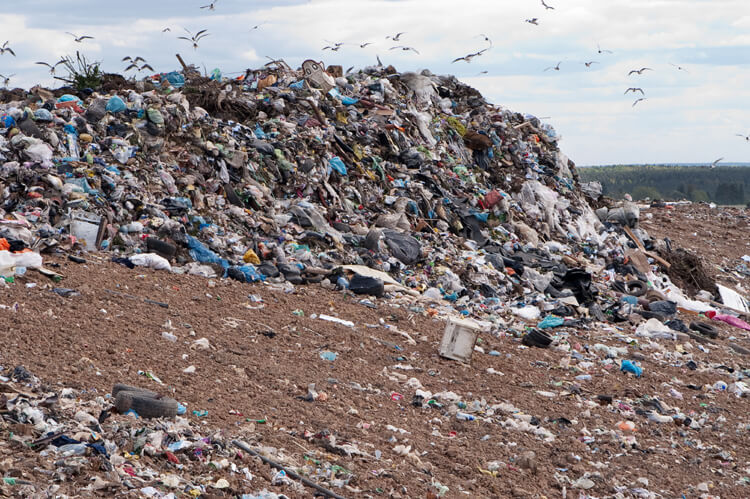
|
|
|
|
|
|
2300
Superhuman powers are available to common citizenry
The nanotechnology of recent decades has conferred powers to citizens that would be considered superhuman by 21st century standards. These upgraded "transhumans" could perform feats regarded as Godlike to denizens of earlier times.
A suitably upgraded individual - if transported back to the year 2000 - would be impervious to weaponry and nearly impossible to contain. They could morph their body into a seemingly infinite variety of forms depending on the situation encountered.*
If trapped in a maximum security prison, for instance, they could alter their own molecular structure, allowing them to walk through walls.* They could broadcast electromagnetic pulse waves to disable electronic devices, vehicles and other objects. Bullets and other projectiles would pass through them with no effect. Microscopic cameras, distributed throughout their body, would function as an all-round 360° sensor - covering the entire electromagnetic spectrum and making it impossible for an attacker to surprise them.
They could sprint at lightning speed and cross a variety of dangerous terrain types: even molten lava would present no obstacle to them. If necessary, they could levitate from ground level to the roof of a skyscraper in seconds. They could turn themselves invisible, morph into another person entirely, or stretch their limbs like elastic.
In many ways, they would resemble a comic book superhero or video game character.
They could manipulate their environment in various ways, generating enough body heat to light a fire, for example, or turning inanimate objects into advanced nanotechnology tools, or modifying the properties of liquids. They could heal a wounded person just by touching them. They could read thoughts and emotions, or extract recent memories.
If standing near others of their kind, they could link and combine their powers to even greater levels – harnessing the power of local weather, for example, or lifting objects weighing thousands of tons.
Their sensory capabilities would be phenomenal. This 24th century person could view individual atoms with the naked eye; or if they wanted to, use their telescopic vision to see distant astronomical objects. They could hear a whisper from miles away, or filter specific voices from a cacophony of background noise. They could determine a precise chemical composition just by tasting, touching or smelling it.
Due to their various biotechnology aids and physical upgrades, they would never require sleep. They could even survive without food and water - living instead off the energy of their surrounding environment, which would be absorbed into their photosynthetic, piezoelectric skin. This same external layering would keep them at peak levels of physical performance, as well as shielding them from the elements.
In fact, many citizens of today have abandoned their homes altogether and taken to a nomadic lifestyle, for this and other reasons. Often, a "home" of today is little more than a small booth or alcove in the street, where a person can temporarily recharge and recuperate, or utilise the greater powers of the net. Even a person's body is often temporary, as they shift between various real world and digital environments. Much of the Earth is now being transformed into a gigantic computer grid where individuals can physically "plug" themselves in.
Not everyone has opted to make this transition. Even now, there are segments of society which are adamant in maintaining a natural, minimally upgraded human body. These people are now a definite minority, however, given the practical immortality and other benefits offered by transhumanism.
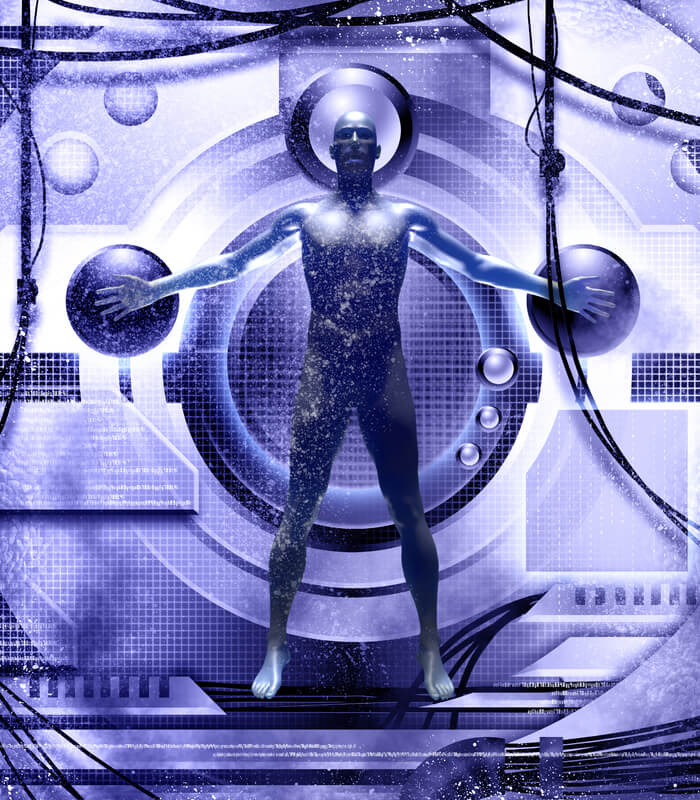
2310
Voyager I reaches the Oort Cloud
The Voyager I probe has been travelling through space since 1977. It reached a milestone in 2012 when it departed the heliosphere and began to interact with the interstellar medium.* Its next milestone would have to wait another 300 years, however. By 2310, it has reached the inner part of the Oort Cloud – a vast collection of ancient comets and icy planetesimals, forming a gigantic sphere that surrounds our Solar System.* This begins at roughly 2000 astronomical units (AU), extending for another 50,000 AU. Its outer edge marks the end of the Sun's gravitational dominance, beyond which lie stars like Alpha Centauri. The probe has long since been passed by faster spacecraft, which have already explored these neighbouring systems. It remains drifting onward as a historical relic, taking 30,000 years to pass through the Oort Cloud.
Click to zoom out
2333 AD
The Dounreay nuclear site becomes safe
In the mid-20th century, Dounreay on the north coast of Scotland became a site for experimental nuclear technology – including fast breeder reactor prototypes alongside nuclear propulsion for Navy submarines. The 178-acre facility, chosen for its remote location away from large population centres, remained in operation from 1955 until 1994.
In 1977, seawater leaked into a shaft packed full of radioactive waste along with sodium and potassium. This caused a catastrophic reaction, blasting off the steel and concrete lids of the shaft and littering the area with radioactive particles. In addition, tens of thousands of fragments of radioactive fuel escaped into the sea between 1963 and 1984 – believed to have washed away from the drainage of cooling ponds. This resulted in a ban on fishing within 2 km of the plant. By 2011, more than 2,300 radioactive particles had been recovered from the sea floor, and 480 from the beaches.
In 1998, the UK Atomic Energy Authority proposed a new timetable for decommissioning, with a cost estimated at £4.3 billion. Waste removal and the demolition of buildings began to progress over the subsequent decades. Teams working on the site used robots – including a particularly large, 75-tonne machine nicknamed the "Reactosaurus" – to dismantle parts of the reactor interior.
By 2025, all legacy Magnox fuel had been retrieved, and by 2029 all radioactive waste had been removed from the shaft affected by the 1977 incident. However, much still remained to be cleaned up. The site's plutonium would not be repacked until 2060. The last building would not be removed until 2125, while the final "Low Level Waste" would take until 2129 to dispose of.*
Even then, longer-term radiation effects lingered, keeping the land unsuitable for human use. In 2020, a report from the Nuclear Decommissioning Authority presented a schedule of 313 years for Dounreay to be fully restored. By the year 2333, this decontamination process is complete.*
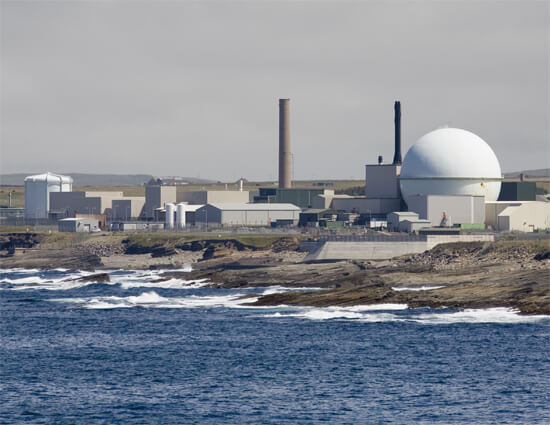
2460 AD
The first Americium batteries are dying
In the first half of the 21st century, Americium began to emerge as a potential new source of electricity for spacecraft.* This human-made element was a byproduct of the decay of plutonium, produced from nuclear reactors. It featured 148 neutrons and 95 protons/electrons, with a half-life of 432 years.
The much greater mission durations provided by long-lasting "space batteries" enabled a new generation of deep space probes to explore the far reaches of the outer Solar System. Lower launch costs, combined with ever more compact and miniaturised components, along with greater autonomy, made it possible to deploy large fleets or networks of tiny spacecraft at tremendous distances. Notable achievements in the 21st century included a partial 3D map of the Kuiper Belt, for example; Neptune and its satellites being explored in more detail, especially the moons' surface environments; along with comprehensive studies of more distant locations such as Pluto, Makemake, Haumea and objects in the Scattered Disk, including Eris and Sedna.
These probes – some drifting for over a trillion kilometres – continued to send back data, for centuries. A few even reached the Oort cloud, providing direct measurements of its composition, spatial extent, gravitational interactions and other characteristics, as well as returning images of distant objects.
By 2460, the first batteries to incorporate Americium are beginning to die, more than 400 years after they first began operating.* The Solar System is a very different place in the 25th century, however, with travel times having shrunk substantially. Much faster and more modern craft (with light speed capability) have subsequently located many of these probes – upgrading/replacing them, cannibalising them for other uses, or returning them for historical archiving.
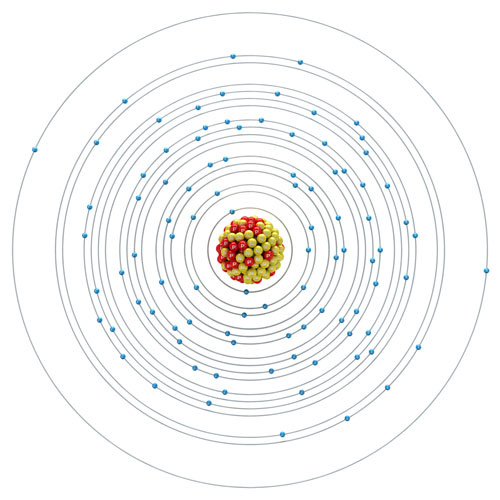
2500 AD
Mars has been terraformed
By the middle of this millenium, the Red Planet has been turned from a cold, dead world into a lush, Eden-like paradise. This monumental achievement was the result of human collaboration on a planet-wide scale. It created whole new industries and undreamed of technologies.
The project was initiated in the early 22nd century. From the outset, it faced major hurdles. Aside from the sheer scale of geo-engineering an entire world, there were political, social and cultural issues too. Many of the early settlers on Mars actually wished for it to remain in its raw, primeval state. Some had an almost spiritual connection to the place. Like certain environments on Earth, they believed it held an intrinsic worth and unique value that should never be replaced. To better it with manmade artificial processes would somehow make it less natural, less real.
These "Reds", as they came to be known, were a potent force during the early Martian government.* They were a thorn in the side of planning authorities, who faced not only protests and demonstrations, but direct sabotaging of industrial activity from some of the more extreme individuals.
On the opposing side of this debate were the "Greens", initially consisting of mostly corporate interests. They included a greater proportion of cyborgs and transhumans, who became adapted to the environment of Mars at an earlier stage and were thus able to survive in the lower air pressures.
Over time, the power and influence of the Greens began to dominate. Improved security measures were introduced, guarding much of the infrastructure and terraforming equipment from attack. Giant solar mirrors were placed in orbit. Measuring tens of kilometres across, these reflected and focussed the Sun's rays onto the poles.
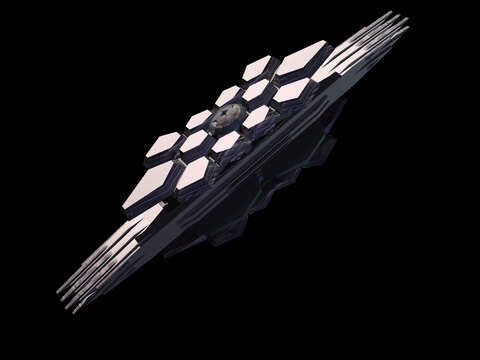
© Luca
Oleastri | Dreamstime.com
Other projects included the seeding of artificial extremophile bacteria. These began converting CO2 into oxygen. Vast swarms of nanobots were later introduced, accelerating this process and offering a greater degree of control, since they were fully programmable. They also helped to produce nitrogen, as well as regulating the overall composition of the atmosphere.
A series of enormous "heat factories" were constructed. These belched out huge amounts of CO2 – much of it imported from Venus – which was converted by the bacteria and nanobots. This also had the effect of raising air pressure.
To increase the volume of water on Mars, comets and ice-rich asteroids were manoeuvred into orbit. These were made to slowly burn up as they descended, without impacting on the ground and causing damage.
This still left the problem of Mars' lack of a magnetosphere, which exposed the surface to harsh ultraviolet radiation. Giant superconducting rings were placed around the latitude lines - focussed mainly on the equator - and buried deep below ground. These were thousands of miles in length and took many decades to construct, but were sufficient to create an artificial magnetic field.
By the 23rd century, semi-frozen lakes and ponds were beginning to form in many regions. This was followed by successful growing of the first lichen and mosses, genetically adapted to withstand a harsher environment. Entire seas and oceans began to appear, along with the first trees and other flora, plus certain arthropods and insects.
A series of chain reactions and positive feedback loops began to accelerate the process, fueled by even greater technological advancements. By the 2400s, a panoply of animals were being introduced including fish, birds, reptiles and mammals. Eventually, it was declared safe for unaided, fully biological humans to walk on the surface of Mars. Humanity had created a second Earth.
2550 AD
Nitrogen trifluoride emissions from 2000 AD have been naturally reabsorbed
Nitrogen trifluoride (NF3) is a colourless, odourless, man-made greenhouse gas – most frequently used by the electronics industry in the late 20th and early 21st century. It was required mainly for plasma etching, the cleaning of chambers in which silicon chips were made, along with semi-conductor and LCD panel manufacture. A number of other important applications were also found in the photovoltaic and chemical laser industries.
Present only in trace amounts, nitrogen trifluoride was considered an environmentally preferable substitute for sulfur hexafluoride and fluorocarbons. Nevertheless, it had extremely high potential as a greenhouse gas when measured on a per molecule basis, with 12,300 times the heat-trapping ability of CO2 over a 20 year period and 17,000 times over 100 years. Despite its low concentration, emissions were also growing extremely rapidly, from just 0.02 ppt (parts per trillion) in 1980, to almost 1.0 ppt by the early 2010s, a 50-fold increase.*
Emission reduction strategies were proposed in subsequent years* to limit its use and slow its contribution to global warming. The atmospheric lifetime – defined as the length of time that a molecule resides in the atmosphere before removal by chemical reaction or deposition – was calculated at 550 years. For NF3 emitted in the early 21st century, complete reabsorption by natural means would therefore take until 2550 AD.*
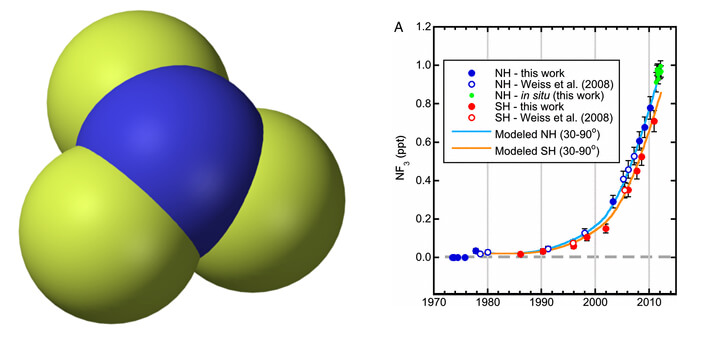
2600 AD
Plastics and other waste products are disappearing from Earth's biosphere
Most of the remaining plastics, tin cans and other waste products from the 20th-21st centuries have decomposed by now. They caused significant harm to the environment during their time on Earth – injuring millions of birds, fish and other animals.* Subsequent generations of these materials were produced in ways that minimised their impact.*
2640 AD
The longest-running music piece comes to an end
To an observer from the early 21st century, the world of the 27th century would be largely unrecognisable. By now, large portions of the Earth have been converted into a mixture of computronium and enormous scientific instruments, alongside dazzling architecture and works of art, whose mere appearance would defy the comprehension of an unaided human mind. Despite these intimidating physical and structural changes, many cultural icons from humanity's distant past have been preserved in their original form, even now.
Among the historical relics to survive intact – dwarfed by the surrounding, high-tech landscape – is St. Burchardi Church, in a small region of what used to be known as Germany. Inside this old building is a musical instrument called an organ, one of the few remaining examples in its original form.
In the year 1987, American composer John Milton Cage Jr. wrote a piece called Organ²/ASLSP (As Slow as Possible). A performance of the organ version began at St. Burchardi church in Halberstadt, Germany, on 5th September 2001. This was scheduled to have a duration of exactly 639 years. The piece started with a silence of 17 months, followed by a first note sounding on 5th February 2003. Various chord changes would occur every year or two, using a total of six pipes, maintained with bellows providing a constant supply of air. By 2030, there had been a total of 21 notes played.
On 5th September 2640, the final moments of this song are witnessed by a small gathering of natural, biological humans. Thus ends the longest-running music concert in history.* John Cage had written the piece, As Slow As Possible, to make a statement about the fast-paced life most people were leading.
2700 AD
Venus has been terraformed
By now, Venus has been transformed into a habitable, Earthlike world. The planet's entire orbit was shifted, bringing it closer to the "Goldilocks Zone", while its day-night cycle was accelerated from 117 days to 24 hours.
Comets were redirected from the Oort Cloud and Kuiper Belt. These were guided through the solar system and into the upper atmosphere of Venus, releasing vast quantities of water.
Other techniques involved the capture and removal of CO2, achieved by the seeding of nanobots, which absorbed this and other toxic gases and replaced them with breathable oxygen.
With lush tropical oceans, Venus now has two large, dominant landmasses - Aphrodite and Ishtar - along with a number of smaller subcontinents and islands. The average surface temperature has stabilised at around 25°C.

2880 AD
The asteroid 1950 DA is passing very close to the Earth, possibly on a collision course
This kilometre-sized asteroid was first discovered in 1950. It was observed for 17 days, then lost until 2000 due to uncertainties in the orbit. In 2001, new radar and optical measurements confirmed a mean diameter of 1.1 km with a very fast rotation period (2 hours), an orbital velocity of 21.3 km/s and a dense composition of nickel-iron.
It was also found to have a potentially very close approach to the Earth, on 16th March 2880. Scientists estimated a 1 in 300 chance that the asteroid would strike the planet on this date - the highest probability of any known asteroid at the time. Were such an impact to occur, it would be catastrophic to civilization, given the size and velocity of 1950 DA. If landing in the ocean, coastlines would be hit by 200 ft tsunamis, running inland over 4 km. There would be major effects on the climate and biosphere.
However, technology is so advanced by 2880 that the asteroid can easily be moved to a safe orbit, if required.
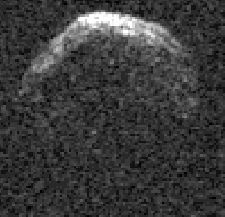
Credit: NASA
« 2299 |
⇡ Back to top ⇡ |
3000 » |
If you enjoy our content, please consider sharing it:
References
1 In the future, it may be possible for the human body to rearrange itself
at will, using "foglets" or a similar technology.
See The
Singularity is Near, by Ray Kurzweil (2005)
http://www.amazon.com/Singularity-Near-Humans-Transcend-Biology/dp/0143037889/ref=sr_1_1?ie=UTF8&s=books&qid=1254172463&sr=1-1
Accessed 29th October 2009.
2 Physics of the Impossible, by Michio Kaku:
http://www.amazon.com/Physics-Impossible-Scientific-Exploration-Teleportation/dp/0307278824/ref=sr_1_1?ie=UTF8&s=books&qid=1250029787&sr=1-1
Accessed 29th October 2009.
3 See 2012.
4 It's Official: Voyager 1 Is Now In Interstellar Space, Universe Today:
http://www.universetoday.com/104717/its-official-voyager-1-is-now-in-interstellar-space/
Accessed 30th December 2013.
5 See page 9 of report.
Cleaning up the UK's earliest nuclear sites, caring for people and the environment, Nuclear Decommissioning Authority:
https://assets.publishing.service.gov.uk/government/uploads/system/uploads/attachment_data/file/909267/Draft_S4_130820_V2.pdf
Accessed 21st August 2020.
6 Dounreay site available for reuse in the year 2333, BBC News:
https://www.bbc.co.uk/news/uk-scotland-highlands-islands-53848766
Accessed 21st August 2020.
7 Rare chemical element could power spacecraft for up to 400 years, Future Timeline blog:
https://www.futuretimeline.net/blog/2019/05/7.htm
Accessed 11th June 2019.
8 List of radioactive isotopes by half-life, Wikipedia:
https://en.wikipedia.org/wiki/List_of_radioactive_isotopes_by_half-life#109_seconds_(gigaseconds)
Accessed 12th June 2019.
9 The Mars trilogy, by Kim Stanley Robinson, is arguably the most
detailed story ever written about the terraforming of Mars. Note: the
timescale in these books is slightly more optimistic than that presented
in FutureTimeline.net
http://www.amazon.com/Red-Mars-Trilogy-Stanley-Robinson/dp/0553560735/ref=sr_1_1?ie=UTF8&s=books&qid=1255822415&sr=1-1
10 Figure 2, Nitrogen trifluoride global emissions estimated from updated atmospheric measurements, PNAS:
http://www.pnas.org/content/110/6/2029.figures-only
Accessed 5th July 2014.
11 Nitrogen trifluoride: the new mandatory Kyoto Protocol greenhouse gas, ecometrica:
http://ecometrica.com/blog/nitrogen-trifluoride-the-7th-mandatory-kyoto-protocol-greenhouse-gas
Accessed 5th July 2014.
12 NF3, the greenhouse gas missing from Kyoto, Geophysical Research Letters:
http://adsabs.harvard.edu/abs/2008GeoRL..3512810P
Accessed 5th July 2014.
13 Drowning in plastic: The Great Pacific Garbage Patch is twice the size
of France, Telegraph.co.uk:
https://www.telegraph.co.uk/news/earth/environment/5208645/Drowning-in-plastic-The-Great-Pacific-Garbage-Patch-is-twice-the-size-of-France.html
Accessed 24th July 2025.
14 Sun
Chips Compostable Chip Bag Earth Day 2010, YouTube:
http://www.youtube.com/watch?v=Yu5J5HQk6VY
Accessed 20th October 2010.
15 As Slow as Possible, Wikipedia:
https://en.wikipedia.org/wiki/As_Slow_as_Possible
Accessed 9th April 2019.

